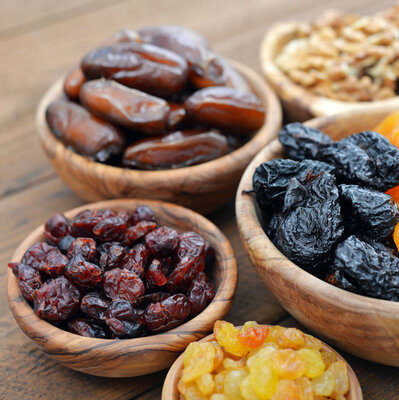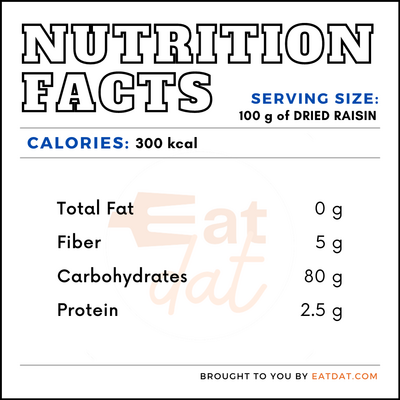
Dried Fruits
What are Dried Fruits?
Dried fruits are the desiccated versions of every fresh fruit. The water content that made up the fresh fruit is removed through different drying methods. Dried fruits give energy and are nutrient-dense versions often loaded with nutritional substances.
The top ten most popular brands of dried fruits are:
- Mavuno Harvest
- Crispy Green
- Its Delish
- RIND
- Sunrise
- Mariani
- Sunny Fruit
- Steve’s PaleoGoods
- Anna and Sarah
- Gerbs
- Traina
Origin of dried fruits
Drying fruit dates back to 2000-1700 BC. Evidence of this technique was found in wall paintings and clay tablets in Mesopotamia. Furthermore, dried raisins and figs were mentioned countless times in the Bible. After this record, dried fruit expanded into more regions. For example, it was Spanish that introduced the method of drying raisin to California. Different fruits are dried in countries worldwide; however, raisin remains the most popular.
Function
Dried fruit can be eaten on its own as a snack. Also, it may be ground into powder form to create paste or other dried food products. Dried fruit is even used as topping in yogurt, smoothies, and salads.
Nutrition
A 100g serving of dried raisin contains the following nutritional values:

Dried fruit doesn’t have less nutrients compared to its fresh counterpart. In fact, these fruits have nutrients that are beneficial to health. Nonetheless, the nutrients in dried fruit are more concentrated due to the evaporation of water content. Not to mention, dried fruit contains three times the fiber of fresh fresh fruit. Also, dried fruit is a good source of vitamin c, antioxidants, and polyphenols, which supply the body with adequate nutrients for proper functioning, decreased oxidative damage, and reduce the risk of diseases.
However, because the water has been removed from dried fruit, this concentrated sugar and calories may result in some side effects. Consuming excessive amounts of sugar can result in weight gain, diabetes, and other related health problems.
Commercial production
Commercial production of dried fruit can be accomplished through different processes.
Drying fruits with heat requires an oven to remove the water contained in a plant. The oven is set to about 140 to 150 degrees Fahrenheit. Then, it bakes till the fruits completely dry up, giving a good quality version when compared to the sunning process. This method is faster and is considered more suitable for mass production.
However, drying fruits with dehydrators is similar to the oven/heat method. This method works with another machine, which is a dehydrator. These machines are available in different sizes and capacities. It works by releasing hot airflow, which then removes the moisture content of the fruits. Big companies tend to use this for production.
Application
You can easily convert any fresh fruit to dried ones by using the heat option to remove the water content. Naturally, fruits are dried to reduce the water content and increase the shelf life. Store dried fruits in an airtight container to further preserve their shelf life.
Dried fruit recipes
These fruits are a great addition to plenty of dishes. Some recipes to try are:
- Yogurt Cake
- Wild Rice Salad with Dried Sour Cherries
- Sunshine Baked Oats
- Nut Butter Granola Bars
- Plum, Date, Banana, and Maple-Bacon Salad
FDA regulation
The FDA and the US Department of Agriculture regulate the packaging and labeling of dried fruit. According to the FDA, dried fruits must be packed in new and commercial containers. All fruits contained in a single packet must be clearly stated on the pack. The US Department of Agriculture outlines commodity specifications for many kinds of dried fruits.
References
Purwon, Gloria. “A Brief History of Dried Fruit.” Blog, 17 Apr. 2018, blog.bellaviva.com/dried-fruit-a-brief-history/
Bjarnadottir, Adda. “Dried Fruit: Good or Bad?” Healthline, Healthline Media, 4 June 2017, www.healthline.com/nutrition/dried-fruit-good-or-bad
US Department of Agriculture, “Commodity Specifications for dried fruits” ams.gov, September 2017 https://www.ams.usda.gov/sites/default/files/media/CommoditySpecificationsforDriedFruit092017.pdf
